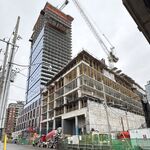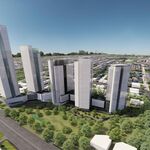67Cup
Active Member
There is some fascinating research on trees and their capacity to transmit to other trees, even of different species, nutrients and even “information.” The most accessible introduction to the subject is a Ted Talk by UBC Forestry professor, Suzanne Simard. Here is a link.
. Check it. She is a very good communicator.
There are a number of other YouTube videos by Simard that can easily be located. She has also published a readable by non experts book called Finding the Mother Tree.
Simard and other colleagues assert that information and nutrients pass through a complex underground web, from root system to root system, in which mushrooms and other fungi play a key role. (The mushrooms we see above ground represent the tip of an iceberg of underground connections.) Older trees, “mother trees” as Simard calls them, play a key role in enhancing the wellbeing of seedlings and young trees.
If Simard and colleagues are right it seems to me there may be implications not just for her primary concern, namely forests. There may be implications also for the way we plant trees in our urban setting. Perhaps the way we do things, planting “orphans“ in concrete containers a set distance apart is less likely to produce healthy trees. Perhaps we should be planting in clusters, around existing trees and sowing the spores of fungi with them. By the way, do most of the trees we plant look to you as if they are thriving, the way we are doing things now?
I don’t know about all this. I am the farthest thing from an expert in the field. Perhaps the real experts disagree with Simard for all I know. But there are folks on UT who know far more than I do. I would hope to see a conversation get going here about our tree planting strategies. My instinct is that a city with healthy trees is also a city with healthy humans.
Thanks for thinking about this.
There are a number of other YouTube videos by Simard that can easily be located. She has also published a readable by non experts book called Finding the Mother Tree.
Simard and other colleagues assert that information and nutrients pass through a complex underground web, from root system to root system, in which mushrooms and other fungi play a key role. (The mushrooms we see above ground represent the tip of an iceberg of underground connections.) Older trees, “mother trees” as Simard calls them, play a key role in enhancing the wellbeing of seedlings and young trees.
If Simard and colleagues are right it seems to me there may be implications not just for her primary concern, namely forests. There may be implications also for the way we plant trees in our urban setting. Perhaps the way we do things, planting “orphans“ in concrete containers a set distance apart is less likely to produce healthy trees. Perhaps we should be planting in clusters, around existing trees and sowing the spores of fungi with them. By the way, do most of the trees we plant look to you as if they are thriving, the way we are doing things now?
I don’t know about all this. I am the farthest thing from an expert in the field. Perhaps the real experts disagree with Simard for all I know. But there are folks on UT who know far more than I do. I would hope to see a conversation get going here about our tree planting strategies. My instinct is that a city with healthy trees is also a city with healthy humans.
Thanks for thinking about this.




